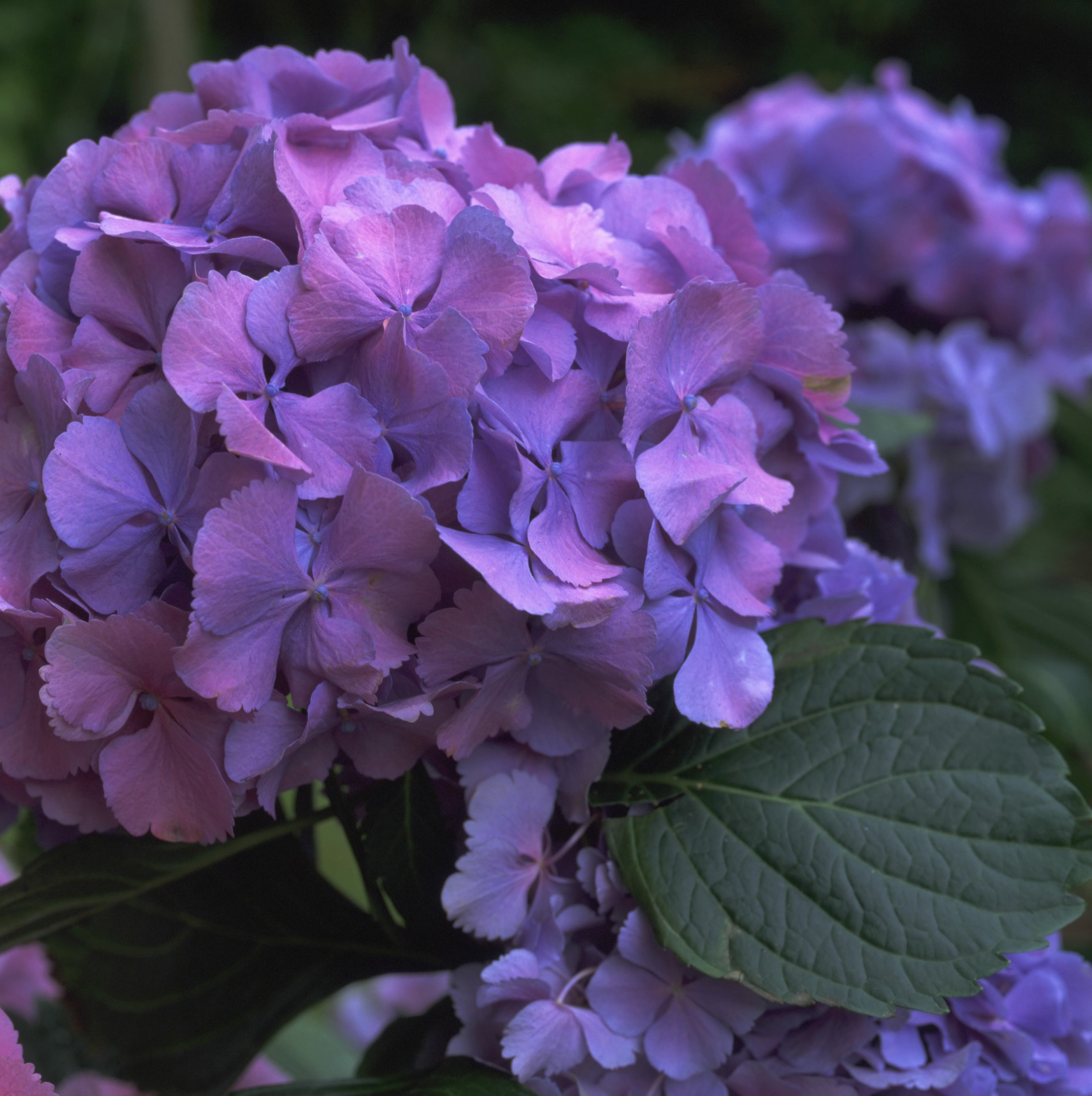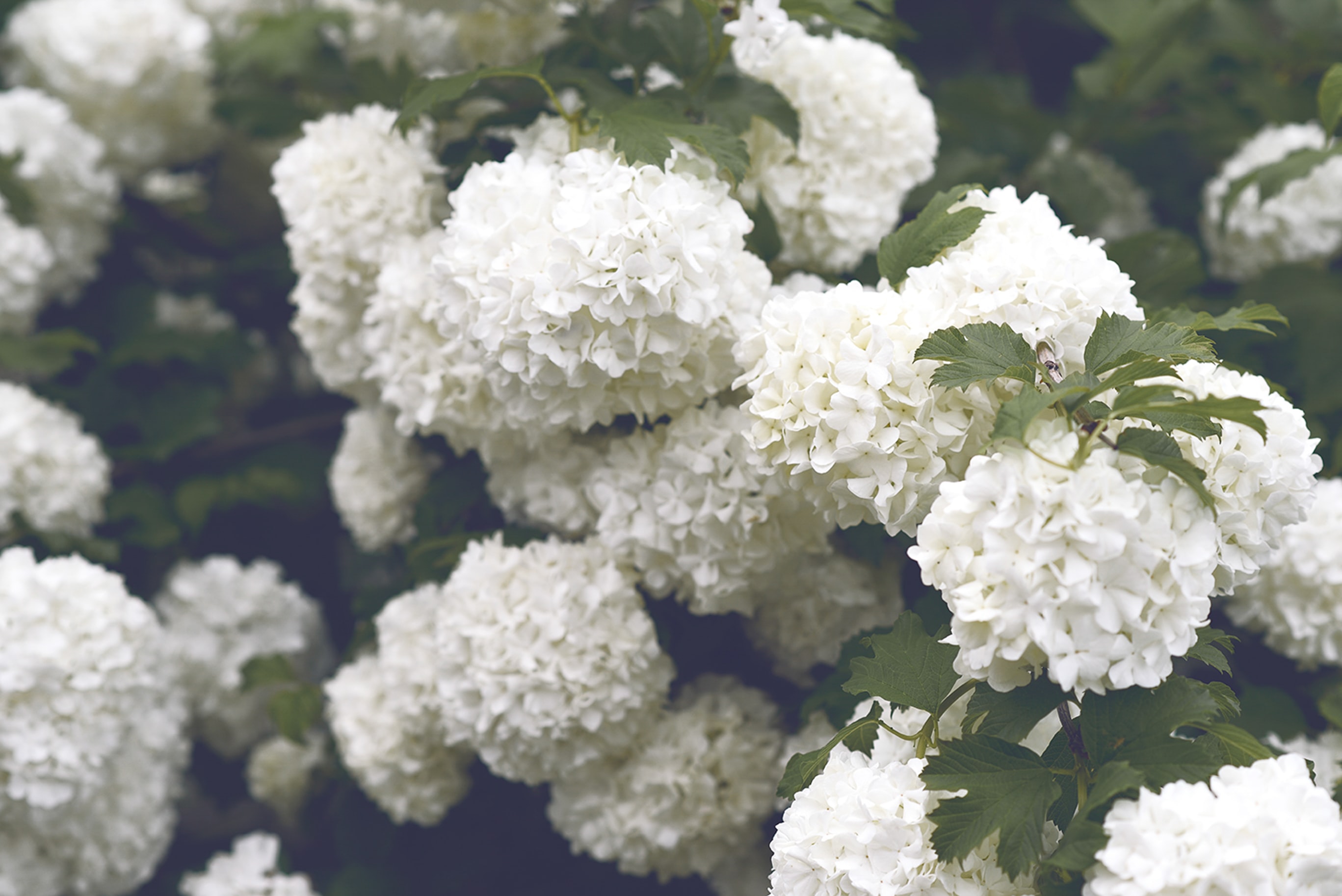How to grow hydrangeas: top tips on growing and caring for these blooms
Learn when, where and how to grow hydrangeas and these shrubs will soon pack a punch in your planting scheme


Find out how to grow hydrangeas and these Insta-friendly delights will charm you with a long lasting show in the garden that just keeps on giving. They come in every hue imaginable from a range of bold blue, bubblegum pink, purple, deep burgundy and zingy lime to a paler palette of delicate blush pink and milky white. You can even get yellow ones, if that’s your thing. Then in autumn the papery petals fade into soft vintage shades tinged with bronze and gold.
The large, saucer-sized flowers add a touch of drama, often reaching as much as 30cm in diameter. A mass of blooms gives you an eye-catching display that carries on month after month right into autumn and beyond (the dried flowerheads look fab tinged with winter hoar frost too). Give your plant plenty of room to grow so it can shape up nicely into a stunning shrub that's a focal point in your garden.
Keep reading for everything you need to know, then check out our best shrubs for small gardens for more planting inspiration.
HOW TO GROW HYDRANGEAS

- One of the most easy-going shrubs around, it's fairly simple to get the most from your hydrangeas.
- Hydrangeas will do well in pots or in the ground.
- They’re happy in partial shade but do well in a sunny position too as long as it doesn’t get baked in summer.
- Preferably choose a spot that’s sheltered, but hydrangeas are pretty adaptable when it comes to location.
- They’re not fussy about soil either as long as it’s moist and well-drained.
- Plant hydrangeas in spring or autumn, adding a mulch of well-rotted manure or compost to help the soil retain moisture and treat them to the conditions they thrive in. Head over to our guide to mulching for more info.
- In dry weather give them plenty of water and occasionally a feed with the right fertiliser and you will bring out the best in them.
WHAT TYPE OF HYDRANGEA SHOULD YOU GROW?

There’s a type of hydrangea for every garden. The mop-head and lace-cap varieties are what most people think of when it comes to choosing a hydrangea. In varying shades of blue and pink according to what sort of soil you have (more about that below), these pretty shrubs covered in saucer-sized blooms tend to be the go-to.
But recently more modern takes have become fashionable. ‘Annabelle’ is having a moment. Its graceful arching branches are covered with luminous white pompom blooms that look just like snowballs. It’s the perfect choice if you want to add a touch of luxe to your garden with a froth of flowers.
The popularity of Hydrangea paniculata is on the up too. These have conical-shaped blooms that look a little like lilac and flower in late summer.
You can also get a greater choice of compact and mini varieties now that are perfect for containers and add a contemporary note to balcony garden ideas and patio ideas, especially when clipped into shape. Some even have honey or jasmine-like scented flowers.
DO HYDRANGEAS LIKE SUN OR SHADE?

It's a safe bet to choose light shade for hydrangeas as overall they tend to prefer this. Most hydrangeas will flourish in a sunny spot as they're pretty adaptable but they will wilt if it's too hot in summer.
If it's too late and yours is already planted in a sun trap, cover it with an umbrella during hot spells to offer temporary respite from the sun or if it's in a container move it into the shade when the temperature soars.
There's more top shade loving plants in our guide.
HOW DO I CARE FOR HYDRANGEAS?

- Hydrangeas are robust and self-supporting, will survive a heavy battering of wind or downpour of rain without flopping, and slugs and snails won’t bother them.
- Hydrangeas will keep coming back year after year. They will even survive harsh winters as they bloom on new wood every spring. To avoid frost damage, leave the faded flowerheads on the plant until spring.
- Water newly planted hydrangeas regularly during the first growing season from spring to summer, especially if the weather is dry. Even if your plant is well established it will enjoy a good dousing of water when it’s hot.
- Hydrangeas love a mulch of compost or manure too, which will keep their roots happy in moist soil. There's top tips on how to compost in our guide to help you make better compost.
- If your plants are in containers they need watering and checking more regularly as the soil will dry out faster. Try moving them to a shadier spot during very hot spells.
HOW DO I GET MY HYDRANGEAS TO FLOWER?

Lack of blooms can be down to a few things. Most types of hydrangea flower on ‘old wood’ (the branches that produced flowers previously). Freezing weather can damage new buds, leading to a lack of flowers.
If you have a hydrangea that won’t flower, you may have pruned it back too hard the year before. Often, hydrangeas that aren’t producing flowers have been pruned in early summer and late winter. If they are over pruned you can end up waiting a whole year before they flower again. To avoid this, prune back stems in early spring, just before new growth emerges. If in doubt, always check the pruning info for the variety you're growing.
Or it could be down to soil. Hydrangeas need phosphorus to flower. Adding bone meal is a great way to increase phosphorus levels in the soil.
WHAT IS THE BEST FERTILISER FOR HYDRANGEAS?
For vibrant flowers and healthy growth treat regularly with a Hydrangea Feed that's specially formulated for the job. If your hydrangea is planted in a pot you'll need to do this once a week in spring and summer when it's packing on growth.
DO HYDRANGEAS GROW WELL IN POTS?

There are more and more varieties of hydrangeas being sold specifically for growing in containers so they can be a good choice for your garden planter ideas. The smaller and more compact ones such as ‘Little Lime’ will do well, and this variety can be clipped into a lollipop standard shape too for a smart addition to your patio gardening ideas.
Choose a decent sized pot to allow for growth and use a good quality potting mix that's two parts John Innes No 3 and one-part peat-free multipurpose compost. Water in well.
An organic mulch will help to retain moisture as your plant settles into its new home. Water and feed regularly throughout spring and summer.
HOW DOES THE SOIL AFFECT HYDRANGEA COLOUR?

Some varieties of hydrangea are blue when grown in acid soil and pink in alkaline soil. To get lovely moody blue flowers, there must be aluminium present, which is found in most soils. In acid to neutral soils, this isn’t a problem. But in alkaline soils, the roots can’t take up the aluminium and the flowers will be pink.
Our guide to soil types explains how to work out what soil you have in your garden.
PRUNING HYDRANGEAS

Mop-head and lace-cap hydrangeas need little attention but regular pruning encourages vigorous growth that can produce bigger and better blooms. Likewise, other species, including the climbing hydrangea, will benefit from a trim.
Go in hard – they will enjoy it! The time to get rid of the old dead flowers is March, trimming back to the first pair of new green buds. Do this and you will end up with a vigorous plant with a good shape and more flowers in the long run. Just make sure you don’t remove any of the new flowerbuds.
There's in-depth advice on how to prune hydrangeas in our guide.
DO HYDRANGEAS COME BACK EVERY YEAR?

Hydrangeas are reliable shrubs you can count on and they're pretty indestructible too. They don’t suffer from attack by garden pests either.
Growing hydrangeas in very dry soil and full sun can lead to their leaves getting scorched and a lack of flowers. The new spring growth is prone to frost damage, so if this happens prune back damaged shoots to just above the first undamaged pair of buds. But generally they return every season to delight you again and again.
HOW TO DRY HYDRANGEAS FOR ARRANGEMENTS

A single large hydrangea bloom or three or four grouped together in a vase creates a stunning arrangement that lasts for months. Their large flowerheads fade and marble beautifully as they dry out on the stem in autumn. Pick them as they turn papery and they will last for ages in dried flower displays. They can also be picked and dried in a vase with a couple of centimetres of water and left until it evaporates.
Head over to our guide on how to dry flowers for more expert tips.
WHERE TO BUY HYDRANGEAS

You can buy hydrangeas as established plants both online and at garden centres. These come in a range of sizes such as small potted plants in 2 or 3 litre pots or much larger shrubs in 10 litre and bigger pots.
Shop hydrangeas at the below suppliers, or keep scrolling for some of our favourite picks at the end of the article.
Shop hydrangeas in the UK
- Buy hydrangeas at Amazon
- Buy hydrangeas at Crocus
- Buy hydrangeas at Dobies
- Buy hydrangeas at Suttons
- Buy hydrangeas at Thompson & Morgan
- Buy hydrangeas at Waitrose Garden
- Buy hydrangeas at You Garden
Shop hydrangeas in the US
- Buy hydrangeas at Amazon
- Buy hydrangeas at Burpee
- Buy hydrangeas at Home Depot
- Buy hydrangeas at Target
- Buy hydrangeas at Walmart
4 VARIETIES OF HYDRANGEA TO TRY IN YOUR GARDEN

With so many wonderful colours and varieties to choose from you're spoiled for choice. Here's a round-up of some of our favourite hydrangea varieties.
Hydrangea aborescens 'Annabelle' from Crocus
One of the loveliest hydrangeas, this has huge globes of tightly packed, creamy white bracts that look like giant snowballs in late summer. As autumn progresses, the blowsy flowerheads fade to pale lime which are just as pretty
Hydrangea 'Hot Chocolate' from Sarah Raven
A fabulous, exciting and new hydrangea with a lot going for it. Its lace-cap flowers cover a spectrum of colour from pale and dusky pink through to deep blue-mauve, and they glow beautifully with a blue haze at dusk.
Hydrangea macrophylla 'Blue Danube' from Thompson & Morgan
Hydrangea 'Blue Danube' has been specially selected for its stunning deep blue flowers, with compact growth yet large, showy flower heads that are up to 20cm across. It will thrive in both mixed borders and in patio containers.
Hydrangea macrophylla 'Teller Red' from Amazon
A large-sized, dense shrub that's a medium to fast rate grower. It is covered with large reddish-pink decorative flowers in mid to late summer. More alkaline soils encourage production of red-pink coloured flowers. Requires moist and well-draining soils.

Lifestyle journalist Sarah Wilson has been writing about gardens since 2015. She's written for Gardeningetc.com, Livingetc, Homes & Gardens, Easy Gardens and Modern Gardens magazines. Having studied introductory garden and landscape design, she is currently putting the skills learned to good use in her own space where the dream is establishing a cutting garden.




